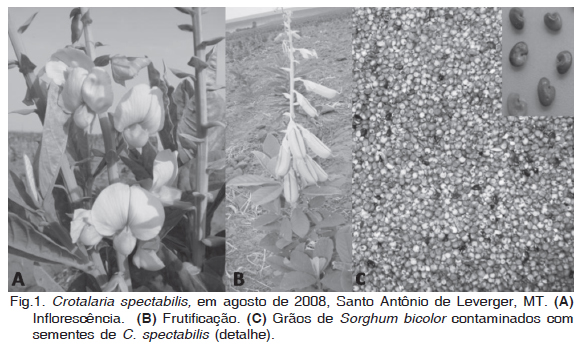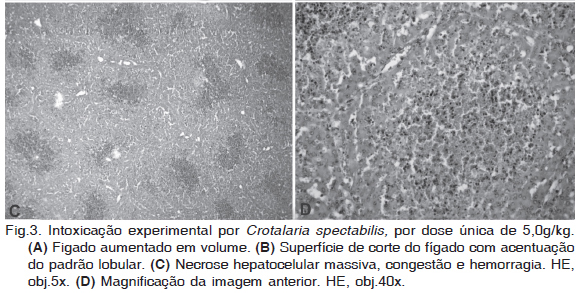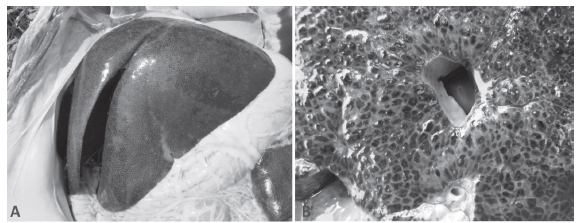Hepatocellular necrosis are reported in swine after consumption of diets containing grains of "sorgo-granífero" (Sorghum bicolor) accidentally contaminated with Crotalaria spectabilis seeds in the municipality of Juscimeira, MT. Clinical signs began 24-48 hours after consumption of contaminated ration and were characterized by depression, lethargy, apathy, loss of appetite, vomiting, pale or jaundiced mucous membranes, ascites, lateral recumbency, the lateral position with paddling and convulsions, clinical outcome was 48-60 hours followed by death. 76 pigs died in four properties. The main gross lesions were liver increased in size and lobular illustration with red-brown central areas interspersed with yellowish areas, ascites and hydrothorax with reddish-yellow liquid containing filaments with aspect of fibrin, enlarged lymph nodes and interlobular pulmonary edema. The disease was experimentally reproduced with 16 pigs divided into six groups that received seeds of C. spectabilis in different doses. Hepatocellular necrosis occurred in seven pigs, two of which received daily doses of 2.5g/kg and five who received single doses of 5 and 9.5g/ kg. Ten daily doses of 0.5 and 1.25g/kg caused liver fibrosis.
Poisonous plants; Crotalaria spectabilis; Leg. Papilionoideae; pyrrolizidine alkaloids; plant poisoning; acute hepatic necrosis; swine diseases; pathology







